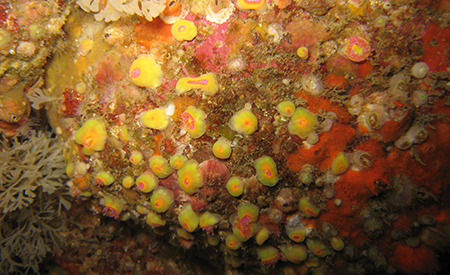/FEM/ABIOP
Type of resources
Available actions
Topics
Keywords
Contact for the resource
Provided by
Formats
status
-

During the ABIOP project launch meeting, the consortium agreed to add a task to the project aimed at identifying the challenges of biocolonisation in an ORE context. This additional work is indeed necessary because it allows the organisation, updating and presentation of the reflections undertaken by biofouling experts from various industrial and research entities and federated by FEM, for several years on this topic.
-

The objective of the ABIOP project was to develop biofouling characterisation and quantification methods to make the design and maintenance of ORE systems more reliable. ABIOP has identified the research needs that will enable better identification and management of the risks relating to the ORE components most sensitive to biofouling. Initial in situ measurements were also carried out to characterise biocolonisation in the Atlantic and Mediterranean from an engineering and environmental point of view. The necessary additional studies are being carried out within the framework of the ABIOP+ project.
-

This report focuses on two important parameters for biofouling image analysis: the artificial light and the distance to the structure. The first section presents the available tool that was already deployed in several studies in link with industrial needs (O’Byrne et al., 2018c) and the laboratory equipment. Section 2 focuses on the automatic segmentation algorithm and the indicators of quality of assessments. Finally section 3 introduces configurations that were tested and the key results.
-

The macrofouling qualification and quantification protocols were extracted from 64 public documents (33 scientific articles, 1 book chapter, 22 internal reports, 4 internship reports and 4 theses) presenting studies conducted in France (n = 40), Europe (n = 16) and the world (n = 8).
-

Backup of the data used for characterising the different biofouling monitoring protocols in an excel file.
-

Proposal of protocols for measuring several biofouling variables (fresh weight in air, fresh weight in water, biovolume, thickness) that were tested during the project.
-

Comparison of multiparameter probes
-

Measurement of the diameter of biocolonised moorings and biofouling composition at T+6 months of immersion.
-

Excel database containing the information collected for the atlas (45 sources for the French maritime façades + 24 on a global scale) and shapefiles for the cartographic representation of the available data
-

The main objective of this atlas is to summarise the knowledge acquired on biofouling, and more generally on communities of living organisms on hard substrates, available today in mainland France and the French overseas territories, in order to anticipate the issues that this phenomenon will pose in an ORE context. The atlas is based on the most exhaustive bibliographical analysis possible, including A-level scientific articles, reports (training courses, monitoring, studies), and works presenting the results of studies conducted in French waters
 Catalogue PIGMA
Catalogue PIGMA